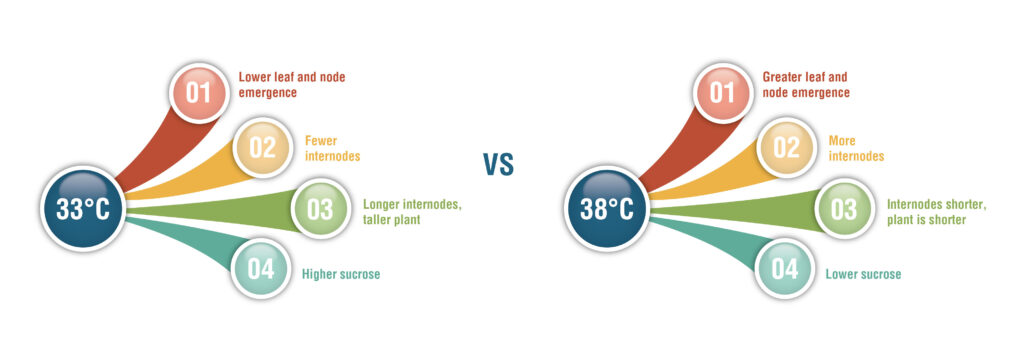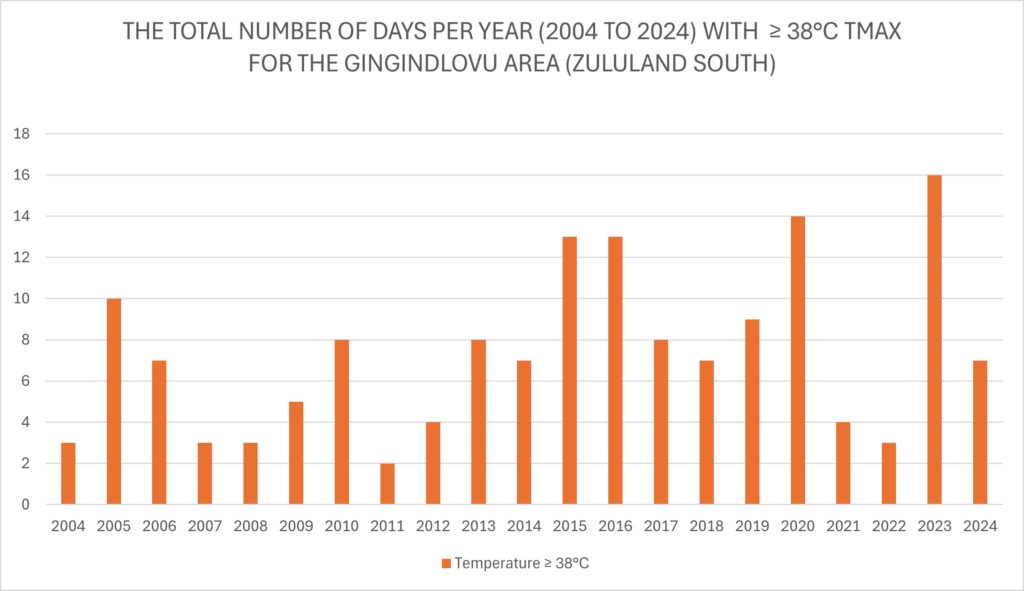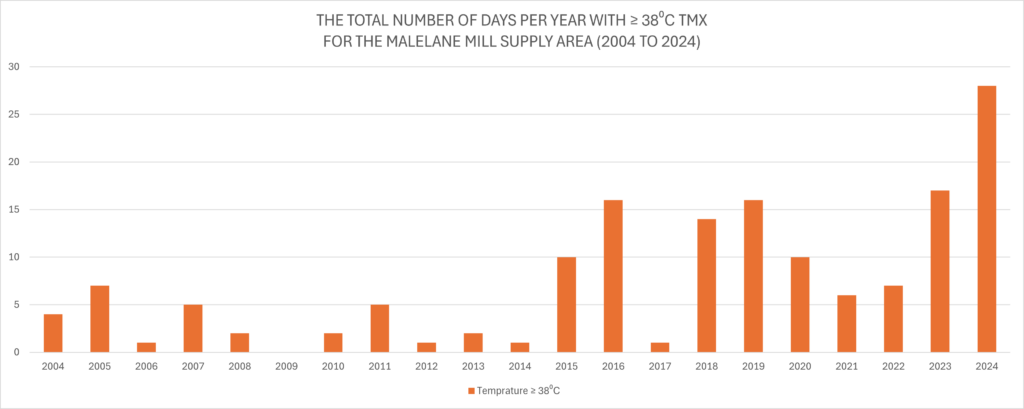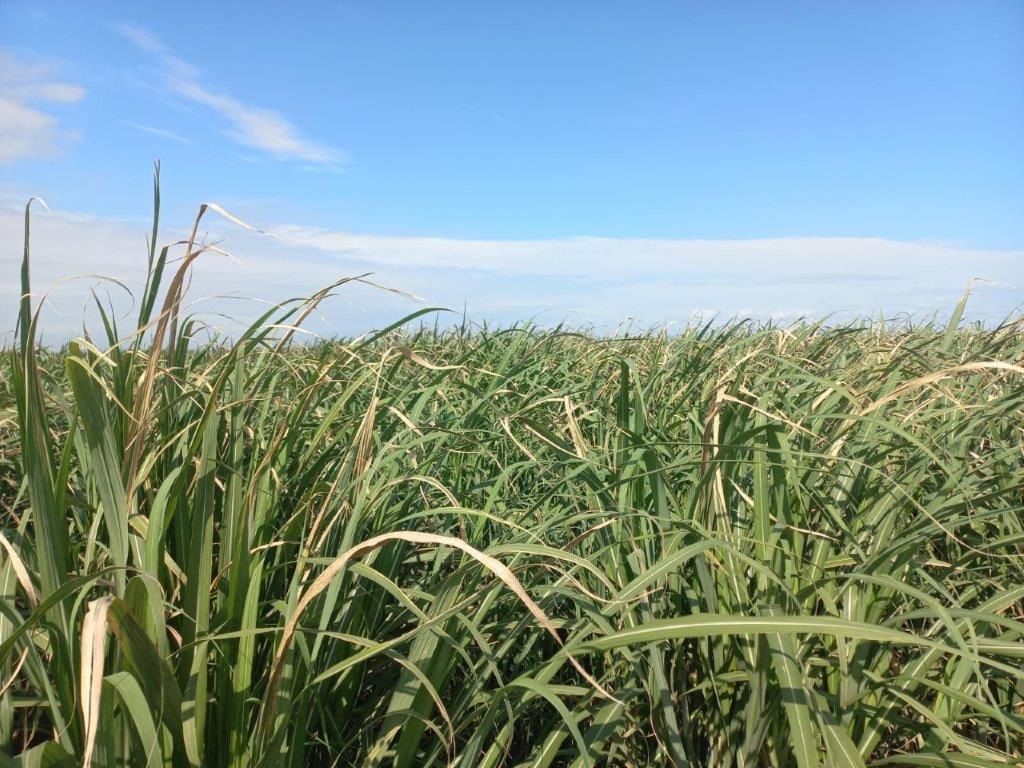Heat stress in sugarcane
This summer, several areas in the industry have reported periods of hotter than normal conditions. Growers may be wondering whether heat waves can cause irreversible damage to sugarcane.
• As a perennial tropical grass, it is unlikely that high temperatures alone will cause irreparable harm to the sugarcane plant. • Often, the danger is where high temperatures coincide with limited water availability. The resultant stress can increase eldana numbers and trigger other pests and diseases. • Heat stress can cause reduced growth and dry matter production resulting in shorter plants, higher fibre and lower sucrose.
Sugarcane’s response to heat
The base temperatures for optimal sugarcane growth are regarded as 30-35⁰C. During prolonged hot and dry conditions, leaves wilt and curl in, and the drying out of the soil can be seen, but what else is happening inside the plant during these abrupt and severe temperature events?
Sugarcane is well-adapted to warm climates, but like any crop, it has its limits. When temperatures exceed the upper limit of heat tolerance in a variety during prolonged heatwaves (temperatures beyond 40⁰C), the plant’s physiological processes begin to falter.
Excessive heat causes the tiny pores (stomata) on the leaves to close, in order to conserve water. This limits the uptake of carbon dioxide, which is essential for photosynthesis, and this ultimately hampers growth. While stomatal closure conserves water, it also reduces the transpiration rate. Transpiration serves multiple purposes, including evaporative cooling of the leaf canopy and facilitating nutrient uptake by the roots. When transpiration is reduced, the plant’s ability to cool itself diminishes, leading to increased leaf temperatures and further stress on plant tissues.
Additionally, heat stress leads to an increased respiration rate. While respiration is vital for energy production (stored energy is converted to active energy), excessive respiration under heat stress depletes the plant’s energy reserves, leaving little for growth or sucrose storage in the stalk. Other biochemical reactions in the plant cells due to oxidative stress can also damage the cells, worsening the physiological functioning of the plant.
Heat stress can significantly impair the physiological functioning of a sugarcane plant, leading to reduced growth and dry matter production. So, in short, hot temperatures can lead to shorter plants, higher fibre and lower sucrose.
As a perennial tropical grass, it is unlikely that high temperatures alone will cause irreparable harm to the sugarcane plant. The biggest danger is often when high temperatures coincide with limited water availability.

Heat and moisture stress
Despite the plant’s reduced transpiration rate, heat stress may still lead to a net water loss, as the plant struggles to absorb enough moisture from the soil to keep up with transpiration needs. Additionally, soil moisture levels can fall below the requirements necessary for vigorous growth due to both meteorological and agricultural reasons. This is especially concerning in shallow, dry, rocky soils in rainfed regions. Even in irrigated fields, for example, a sub-surface irrigation system may only induce the plant to develop a superficial root system, which could prove insufficient to meet the plant’s water balance needs under heatwave conditions. Irrigation becomes less effective under extreme heat conditions and water scarcity could be another consequence of rising average temperatures, which further aggravates the situation.
Severe water limitations affect growth and therefore yield. Eldana numbers often increase in stressed cane, and the biochemical reactions alluded to above could also be a trigger for infection by other insect pests and diseases. Heat stress, compounded by erratic rainfall patterns, can lead to lower yields and increased production costs.
Points to consider
To combat the effects of heat stress, our industry must proactively consider:
- Research and development into heat-tolerant sugarcane varieties. It must be noted though that the plant breeding and selection process does take place under a range of climatic conditions (i.e. also heat wave episodes and limited water availability), which results in the natural selection of more heat-tolerant varieties.
- The development of irrigation systems and techniques to assist evaporative cooling of plants.
- The adoption of sustainable agroecological practices, such as mulching and intercropping, that can help maintain soil moisture and reduce surface temperatures.
- Planting dates that take severe heatwave predictions into consideration.
- Concerted efforts to reduce cut to crush delays. High ambient temperatures will hasten the post-harvest degradation of cut cane. See Information Sheet 4.5.
- Analysis of historical cane delivery and weather data to establish the economic impacts of heat stress on the sugarcane crop. A cursory look at data from SASRI WeatherWeb suggests that there has been an increase in the number of days with high temperatures (≥38⁰C) over the past 20 years. See graphs for two areas in the sugar industry below.

Gingindlovu

Malelane

